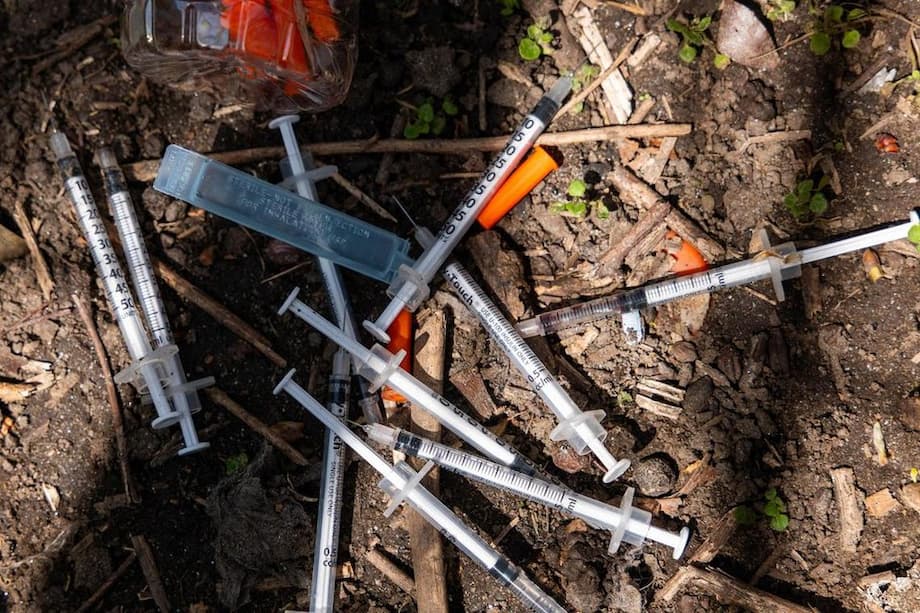Young Adults Drive New HIV Cases in Malaysia
In 2024, Malaysia faces a sobering reality: young adults are at the forefront of new HIV infections. According to Health Minister Dzulkefly Ahmad, 75 percent of new HIV cases involve individuals aged between 20 and 39, with the majority of transmissions now occurring through sexual contact rather than the sharing of drug needles. This marks a significant shift from previous decades and underscores the urgent need for targeted prevention, education, and support strategies for Malaysia’s youth.
- Young Adults Drive New HIV Cases in Malaysia
- How Has HIV Transmission Changed in Malaysia?
- Why Are Young Malaysians at Higher Risk?
- HIV Among Malaysian Students: A Growing Concern
- The Role of Stigma and Barriers to Care
- Health Complications: Lymphoma and Co-Infections
- Global and Regional Context
- What Can Be Done? Policy and Prevention Strategies
- In Summary
How Has HIV Transmission Changed in Malaysia?
Historically, HIV in Malaysia was primarily associated with intravenous drug use. In the 1990s, nearly all cases (99 percent) were among men, largely due to needle sharing. However, the landscape has changed dramatically. By 2024, sexual transmission accounted for 96 percent of all new HIV cases, with 64 percent involving homosexual or bisexual contact and 32 percent heterosexual contact. Men still make up the vast majority of cases (90 percent), but the proportion of women affected has increased to 10 percent, reflecting broader social and behavioral changes.
This shift mirrors global trends, where sexual transmission has become the dominant route of infection in many regions. In Malaysia, the decline in cases linked to drug use is attributed to successful harm reduction campaigns, such as needle exchange programs and public awareness efforts about the dangers of sharing needles. However, the rise in sexually transmitted cases, especially among young adults, presents new challenges.
Regional Hotspots and Demographics
Selangor leads the nation in new HIV cases, followed by Kuala Lumpur, Sabah, Sarawak, and Johor. Sabah, for instance, recorded 344 new cases in 2024, making it the third-highest state for HIV prevalence. The majority of new infections are among men aged 20 to 29, who account for 44 percent of all cases, with those aged 30 to 39 comprising another 31 percent. Alarmingly, cases have also been reported among teenagers as young as 13, highlighting the vulnerability of Malaysia’s youth.
Why Are Young Malaysians at Higher Risk?
Several factors contribute to the high rate of HIV among young adults in Malaysia:
- Lack of Comprehensive Sexual Education: Many young people lack accurate information about HIV transmission and prevention. Surveys reveal that 77.4 percent of the general population has insufficient knowledge about HIV, with adolescents aged 13–19 showing the highest prevalence of inadequate knowledge at 86.1 percent.
- Social Stigma: The stigma surrounding HIV and sexual health discourages many from seeking testing or treatment. This is particularly acute among high-risk groups, such as men who have sex with men (MSM) and sex workers.
- Changing Social Norms: Increased use of dating apps, liberal lifestyles, and peer pressure contribute to early sexual activity and unprotected sex among students and young adults.
- Barriers to Prevention: Many young people are unaware of or unable to access preventive measures like condoms and pre-exposure prophylaxis (PrEP).
Dr. Zaiton Yahaya of the Malaysian AIDS Council notes that school leavers and university students are particularly at risk, often lacking awareness of infection risks and engaging in unprotected sex due to trust, misinformation, or peer pressure.
Persistent Myths and Misconceptions
Despite decades of public health campaigns, misconceptions about HIV remain widespread. A 2020 nationwide survey found that:
- 24.6 percent believed monogamy with an uninfected partner does not reduce risk
- 30.8 percent doubted condom effectiveness
- 31.9 percent thought healthy-looking people cannot have HIV
- 40.3 percent believed HIV can be transmitted by sharing meals
- 27.6 percent thought mosquito bites could transmit HIV
These myths contribute to risky behaviors and hinder effective prevention efforts. Television remains the primary source of information, but digital platforms and peer-led campaigns are increasingly important for reaching young audiences.
HIV Among Malaysian Students: A Growing Concern
University and school students are experiencing a rise in HIV infections, with most cases resulting from sexual activity. Data from the Malaysian AIDS Council shows that 222 students from institutions of higher learning (IPT) contracted HIV in 2024 alone, contributing to over 1,000 cases among IPT students since 2021. Among school students aged 13 to 19, four percent have contracted HIV, mainly through sexual activity.
Experts warn that traditional prevention strategies—such as lectures and leaflets—are outdated and fail to engage at-risk students. Many avoid HIV programs due to fear of judgment or are unaware such programs exist. Interactive content, social media, and peer education are more effective in reaching young people.
Risk Factors and Behaviors
Key risk factors among students include:
- Early sexual activity and use of dating apps
- Lack of formal sexual health education
- Peer pressure and social norms that discourage condom use
- Intentional transmission in rare cases, as acts of revenge
Most infections result from unprotected casual sex, with trust and lack of knowledge cited as reasons for not using protection. Some students mistakenly believe that HIV can be identified by appearance or that it is curable, further increasing their vulnerability.
Innovative Prevention and Support Initiatives
In response to rising infections, the Malaysian AIDS Council and Malaysian AIDS Foundation have intensified awareness initiatives. The ProtectNow Hub, Malaysia’s first digital HIV prevention services platform, offers immediate access to PrEP, HIV self-testing, mental health support, and addiction recovery. Since its launch, the platform has received over 74,000 visits, reflecting strong demand for accessible, stigma-free healthcare services.
Experts recommend shifting to youth-friendly, comprehensive sexual education, confidential HIV testing on campus, and peer counseling. The success of harm reduction strategies for drug users is cited as a model for sexual transmission prevention.
The Role of Stigma and Barriers to Care
Stigma remains a major obstacle in Malaysia’s fight against HIV. Many at-risk individuals are reluctant to get tested or seek treatment due to fear of discrimination. This not only delays diagnosis and treatment but also increases the risk of unknowingly transmitting the virus to others. In 2023, 68 percent of all patients were diagnosed late, up from previous years, highlighting the need for increased awareness and early intervention.
Stigma is particularly acute for MSM, sex workers, and transgender individuals, who face both social and legal barriers. Efforts to reduce stigma include public education campaigns, confidential testing services, and support from non-governmental organizations like the Malaysian AIDS Council.
Living with HIV: Coping and Adherence Challenges
For young people living with HIV, coping with the diagnosis and adhering to antiretroviral therapy (ART) can be challenging. A 2024 study in Klang Valley found that while religion and spirituality are important coping mechanisms, greater reliance on these strategies was linked to lower medication adherence. Only 66.8 percent of young people surveyed were adherent to their ART regimen. Longer duration on ART was associated with better adherence, suggesting that ongoing support and education are crucial for long-term health outcomes.
Health Complications: Lymphoma and Co-Infections
HIV weakens the immune system, making patients more susceptible to other illnesses, including certain cancers and infections. Recent reports highlight a worrying rise in lymphoma (a type of blood cancer) among HIV patients in Malaysia. HIV-positive individuals are 10 to 20 times more likely to develop lymphoma compared to those without HIV. Early diagnosis and treatment are critical, but stigma and financial constraints often delay care.
Co-infection with tuberculosis (TB) is another major concern. Malaysia, like many low- and middle-income countries, faces a significant burden of HIV-TB co-infection, which complicates treatment and increases mortality. Early screening, improved diagnostics, and comprehensive management are essential to address these challenges.
Global and Regional Context
Malaysia’s HIV epidemic reflects broader global trends. In 2024, an estimated 40.8 million people were living with HIV worldwide, including 2.42 million children aged 0-19. While new infections among children have declined by 62 percent since 2010, the decline among adolescents has been slower at 44 percent. Sub-Saharan Africa remains the most affected region, but Asia is seeing increasing sexual transmission, particularly among key populations such as MSM, sex workers, and people who inject drugs.
Malaysia’s notification rate of 9.4 per 100,000 people is lower than in some neighboring countries, but the concentration of cases among young adults and the persistence of stigma present ongoing challenges. The government provides free treatment to affected groups, but uptake is hindered by social and cultural barriers.
What Can Be Done? Policy and Prevention Strategies
Experts and policymakers agree that a multi-pronged approach is needed to curb the rise of HIV among young Malaysians:
- Comprehensive Sexual Education: Schools and universities should provide accurate, age-appropriate information about HIV, sexual health, and prevention methods. Interactive and peer-led programs are more effective than traditional lectures.
- Accessible Testing and Treatment: Confidential, youth-friendly testing services and easy access to ART are essential. Digital platforms like ProtectNow Hub can help bridge gaps in access and information.
- Stigma Reduction: Public campaigns and community engagement are needed to challenge myths, reduce discrimination, and encourage early testing and treatment.
- Targeted Interventions: High-risk groups, including MSM, sex workers, and students, require tailored prevention and support services. Lessons from harm reduction strategies for drug users can inform sexual health interventions.
- Support for People Living with HIV: Psychosocial support, peer counseling, and family involvement can improve coping and adherence to treatment.
Policymakers are urged to prioritize inclusive and accessible HIV prevention strategies, address knowledge gaps, and invest in youth-centered, community-led initiatives.
In Summary
- Young adults (20-39) account for 75 percent of new HIV cases in Malaysia, with sexual transmission now the dominant route.
- Men comprise 90 percent of cases, but infections among women are rising.
- Lack of sexual health education, persistent myths, and social stigma are major barriers to prevention and care.
- HIV infections are increasing among students and teenagers, with most cases linked to unprotected sex.
- Digital platforms and peer-led initiatives are emerging as effective tools for prevention and support.
- Stigma, late diagnosis, and co-infections like lymphoma and tuberculosis complicate the fight against HIV.
- Comprehensive education, accessible testing, stigma reduction, and targeted interventions are key to reversing current trends.












